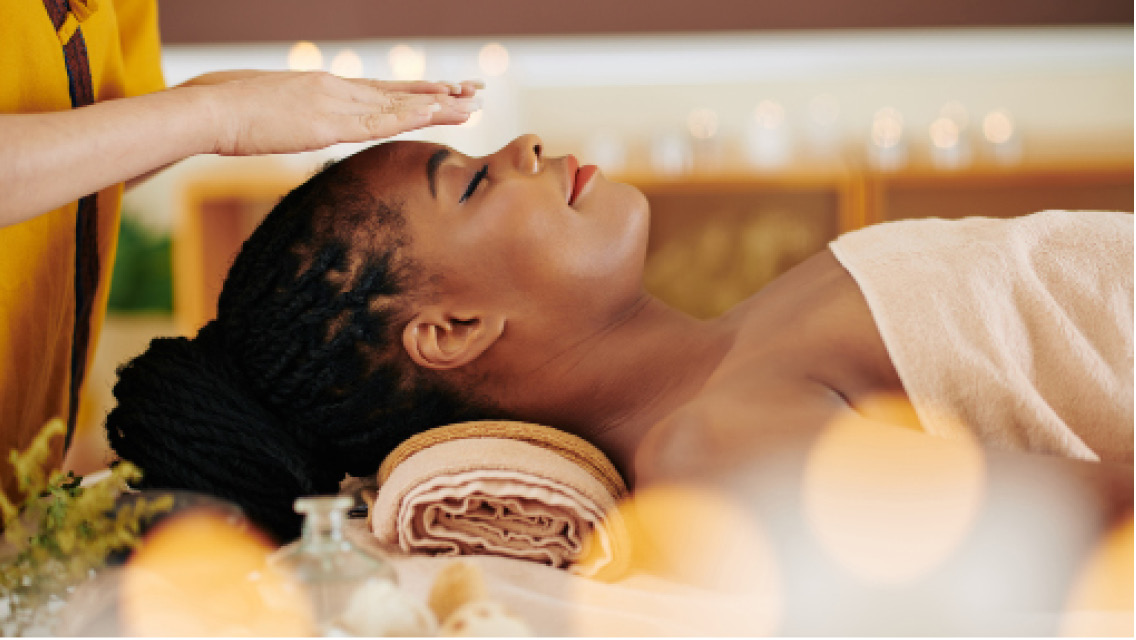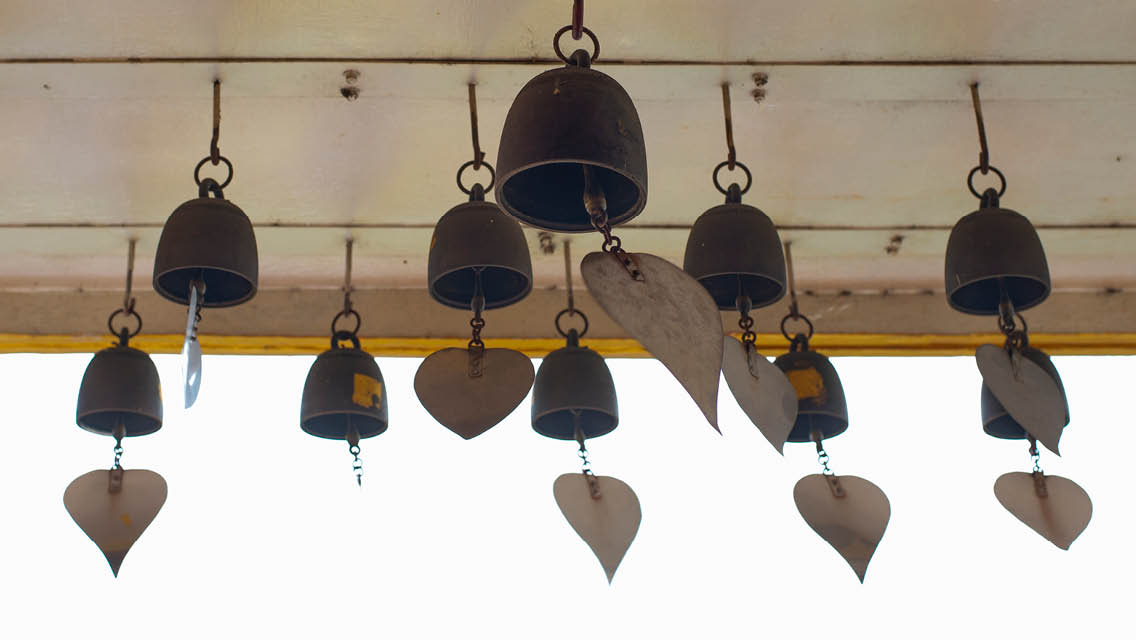Ernest Williams began a series of Reiki treatments in 2002, when his body was wracked by stress and his blood pressure was headed through the ceiling. The healing practice, designed to balance energy and restore vitality, did just that for the television studio technician. “Reiki releases stress and pain without medication,” says Williams, now 55 and retired. “It makes you feel like a new person.”
Reiki, which means “universal life force” in Japanese, is one of a growing number of alternative health treatments gaining popularity in the West. Similar to healing touch (see “What Is Healing Touch?” ), Reiki is offered at many holistic clinics and hospitals, such as the Windber Medical Center in Windber, Pa., where Williams receives his treatments.
“Very few people had even heard of Reiki,” says Jeanne Brinker, RN, BSN, who introduced the treatment at Windber in 2000. “I worked on staff members with headaches, fatigue, stress, high blood pressure and burns. As they began to see amazing results with pain and stress relief, they started recommending Reiki to patients they thought could be helped.”
Many nurses and massage therapists find Reiki useful in their work, notes Debbie Ringdahl, RN, CNM, a teaching specialist at the University of Minnesota’s School of Nursing. She teaches popular level-one and -two Reiki classes through the University’s Center for Spirituality and Healing that attract undergraduate and graduate students, as well as nursing and other healthcare professionals.
Reiki treatment has been shown to reduce stress, pain and anxiety, improve sleep and digestion, lower blood pressure, and help the body heal and detoxify. It can also help clear the mind, says Reiki master William Lee Rand, president of the International Center for Reiki Training and author of Reiki: The Healing Touch. The treatment, he says, “helps a person be more focused and filled with life. It helps them become more aligned with who they are.”
What Is Reiki?
Like traditional Chinese medicine, Reiki is based on the idea that every cell in your body has its own energy, or life force. During Reiki treatment, a practitioner’s hands flow gently around your body and work to improve its energy flow. And while the benefits can be substantial, Reiki is not a substitute for traditional disease diagnosis and treatment.
If your practitioner notices a “hot spot,” an area of the body that feels warm, likely because of energy disruption, he or she might suggest you see a physician. “Reiki doesn’t treat disease,” writes Reiki master Pamela Miles in her book Reiki: A Comprehensive Guide. “Reiki helps restore balance. And being balanced helps maintain normal functioning.”
The National Center for Complementary and Alternative Medicine (NCCAM), part of the National Institutes of Health, places Reiki under the umbrella of energy medicine – treatments that aim to restore proper energy flow through the body. NCCAM is currently funding research that studies Reiki’s ability to reduce stress, as well as its effect on people suffering from AIDS, prostate cancer and fibromyalgia. A 2004 study published in the Journal of Alternative and Complementary Medicine found that Reiki has a positive effect on the autonomic nervous system, including helping to lower heart rate and diastolic blood pressure. Still, some aspects of Reiki’s power are impossible to measure.
“The energy of Reiki stimulates and nourishes the natural process of a person’s life,” says Phyllis Furumoto, a Reiki master whose grandmother, Hawayo Takata, brought Reiki from Japan to the United States.
Reiki Treatment
A Reiki session begins with a conversation about your goals – whether you’re hoping to heal a particular area, feel more balanced or simply relax. Practitioners say about 75 percent of their patients come with something specific in mind, while the rest are seeking rejuvenation and relaxation.
During treatment, which can last from 30 to 90 minutes, you lie fully clothed on a massage table. Practitioners lay their hands on or slightly above your body’s main energy centers, such as the chest and stomach. Their hands might hover a few minutes longer over areas that appear to have an energy disruption. But the practitioner isn’t guiding the energy flow, says Rand. He or she is a conduit for energy, which flows wherever it’s needed in the client.
Whatever else may happen in the body during Reiki, the treatment triggers the body’s relaxation response, quieting the sympathetic nervous system (which is responsible for our innate fight-or-flight response) and strengthening our parasympathetic nervous system (which helps us rest and digest).
Kathie Lipinski, RN, a holistic nurse in private practice in Long Island, N.Y., describes it this way: “Everybody says they experience a very, very deep sense of relaxation and a very deep peace.”
Find a Practitioner
Reiki treatment can be quite powerful – and even more so if you choose a practitioner who is a good fit for you. It’s important, say experienced Reiki practitioners, to be aware that there are several schools of thought and various ways of practicing the treatment.
Eastern-medicine practitioner Mikao Usui began to work with the energy he called Reiki in Japan during the early 1900s. One of his students, Chujiro Hayashi, treated and later taught Reiki to Hawayo Takata, who brought the practice to the United States in 1936. Some practitioners continue to follow Takata’s methods and lineage, but others use varied forms.
There are three levels of Reiki training, which can vary widely in intensity, type and quality. People who complete the first level are qualified to practice Reiki on themselves and others in their home; those who complete level two can practice Reiki on someone in a different location; and people who complete level three are considered Reiki masters, who can both practice and teach Reiki. Practitioners aren’t officially certified or licensed.
To find the right fit for you, ask practitioners what lineage they follow. Serious Reiki practitioners should be able to explain how their approach compares with Takata’s methods.
Also, make sure you’re comfortable with the environment in which the sessions will occur. A treatment could take place in the home of someone who chants to begin the session and uses crystals to amplify the energy. Or you could receive treatment at an integrative health clinic without ritual. Go with whatever feels welcoming.
For Williams, who now swears by his Reiki treatments at Windber Medical Center, what has felt most welcoming are the results: “It’s a way for me to relax if I’m stressed out or have a lot of tension,” he says. “It makes me feel better.”
Intro to Reiki
Reiki is a gentle Japanese healing technique that works to balance a person’s energy and renew their body and soul. During treatment, practitioners move their hands in specific positions around the body.
Benefits of Reike
- Reducing stress, pain and anxiety; improving sleep and digestion; lowering blood pressure; speeding the body’s ability to heal after surgery or burns; reducing side effects of medications or chemotherapy.
Commitment
- Each session lasts 30 to 90 minutes, and usually practitioners recommend about four sessions. Some people go once, and others get regular treatments.
Cost
- $25 to $125 per session




This Post Has One Comment
Really good, it is a kind of thing which transform from one to another way of energy. Thanks for sharing this information, subscribed your blog.